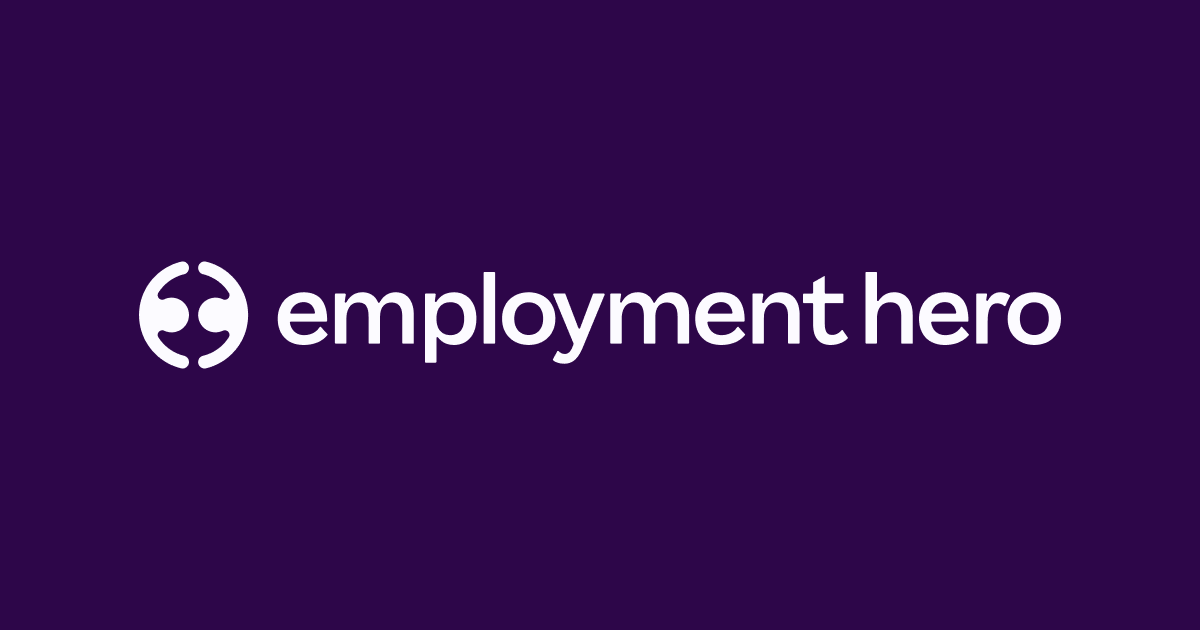The modern hiring landscape is challenging, with talent shortages and a culture of rapid digital transformation that constantly moves the goalposts.
However, with the right approach you can position yourself as a desirable employer.
Just as you’ve crafted a brand image for your clients, it’s equally important to create one for jobseekers.
Read on to learn how employer branding helps attract and engage the best employees.
Build loyalty as a solid basis for business growth.
Here’s what we’ll cover:
Humanising HR: the magic of AI in empowering people and processes
Harness the power of AI to boost HR efficiency and engagement, foster smarter decisions, and enhance human-centric processes.
Get your copy
What is employer branding?
Employer branding is how the general public and potential candidates see your business as a place to work.
It’s the reputation you build through your values, culture and how you treat your people.
A strong brand gives an instant impression of what it’s like to work at your company.
Furthermore, a proper definition of employer branding includes what an employer promises and what its people truly experience day to day.
That means the way you support growth, reward success, and create a sense of purpose.
In short, it’s the image you project in all touch points, from job ads to staff meetings.
Internal vs. external employer branding
This definition makes it look like everything hinges on what the world sees externally. However, employer branding only works if it’s backed up by real experiences.
When internal culture and external messaging line up, you build trust with both employees and future hires.
Internally, your brand shapes how your team feels about working for you.
That means clear communication, fair policies, and a culture that reflects your values.
If your staff feel respected and supported, they’ll likely stick around—and tell others how happy they are in your organisation.
Why is employer branding important?
Jobseekers are drawn to companies that offer clarity, purpose, and a great working environment.
A well-defined employer brand helps you attract the kind of people that match your company culture.
By encouraging the right fit, you improve candidate quality and shorten hiring time.
A strong brand also keeps your team engaged, because people prefer to work where they feel respected and supported.
When your staff live out your values daily they become natural ambassadors, sharing their experiences both online and offline.
By shaping the overall perception of your business as a place to work, employer branding sets the stage for a more detailed targeting of candidates—recruitment marketing.
This is aimed more at attracting applicants for specific roles.
So, while employer branding points to long-term trust and engagement, recruitment marketing is more short-term and tactical, centred on filling open positions.
Key components of a strong employer brand
Your employer brand is influenced by many indirect factors, such as your careers page, social media, reviews, and how you talk about your team.
But to shape it more deliberately, there are some basic building blocks to consider:
- Mission and purpose. What your business stands for and why it exists, e.g. your commitment to sustainability or social impact.
- Employee value proposition (EVP). What you offer in return for someone’s skills and time, such as flexible hours, career development, or profit-sharing.
- Communication channels. How you present your brand to current and future employees. Consider consistent messaging across job ads, LinkedIn posts, and internal newsletters.
- Leadership and tone. How leaders embody your values and set the tone from the top. Do you encourage open-door policies or share company updates in person?
- Employee experience. What day-to-day life is like within your business. This touches on team support, progression paths, or how feedback is handled.
How to build an employer branding strategy
Ok, let’s see what it’s like to compile these components.
With the right planning and research, and suitable talent management softwareyou can build an ongoing strategy that works for current employees as well as future hires.
These techniques effectively mean HR has a role in brand marketing, since they are on the front lines, helping to build and maintain the company’s culture.
1. Start with an honest audit
Look at how your business is currently perceived. Review employee feedback, online reviews, exit interviews, and the candidate experience.
Compare what you think your brand is with how others see it.
This will highlight gaps and help you spot quick wins.
2. Define your employee value proposition (EVP)
Your EVP should answer one simple question: why should someone work for me?
It’s the blend of rewards, growth, support, and purpose you offer in return for someone’s time and talent.
However, also check that you have the necessary systems in place to actually deliver these outcomes.
3. Activate your brand internally
Before promoting your brand to the outside world, get your house in order.
Once your EVP is defined, use it to guide how you welcome new staff, run meetings, manage teams, and recognise performance.
Involve employees in shaping the language and look of your brand, so it reflects real experiences—not just leadership’s vision.
4. Share it externally and consistently
Now you can start amplifying your brand more widely.
Update your careers page, post authentic employee stories, and make sure job descriptions reflect your tone and values.
Use social media and reinforce your message with real examples.
5. Measure, learn, and improve
Track what’s working and what isn’t. Use data like application rates, retention figures, and staff engagement scores.
Ask new hires why they joined.
Revisit your strategy regularly and adjust it as your team and business evolve.
Humanising HR: the magic of AI in empowering people and processes
Harness the power of AI to boost HR efficiency and engagement, foster smarter decisions, and enhance human-centric processes.
Get your copy

Employer branding examples and inspiration
A common trope online is the image of tech bros having the time of their lives at the Googleplex.
But what do the big brands really say about what it’s like to work for them?
Here are some examples, straight from the horse’s mouth.
Google: Shaping culture through innovation and openness
On its careers site, Google shares real employee stories, day-in-the-life videos, and details of its hybrid working model.
It highlights how teams are given freedom to explore new ideas and work flexibly.
This focus on trust, curiosity, and collaboration reflects what many candidates now seek: a workplace that values input and offers room to grow.
Microsoft: Putting its people in the spotlight
Microsoft’s “Microsoft Life” Instagram account is a great example of authentic brand storytelling.
Employees from around the world share their experiences—from career journeys to personal milestones.
The tone is personal, not corporate, and shows the human side of life at Microsoft.
This content helps candidates imagine themselves in the role, while also reinforcing the company’s values around diversity, growth and belonging.
Unilever: Aligning purpose with employee impact
Unilever’s employer brand centres on making a positive difference in the world. Its careers hub emphasises how employees contribute to sustainability, social good, and innovation in everyday products.
What sets Unilever apart is how clearly it links its mission to individual roles. Candidates are shown not only what they’ll do, but why it matters.
This message of purpose and impact is repeated across its job ads, videos, and leadership content.
While these global brands serve as good examples, don’t be fooled into thinking employer branding is not relevant for small businesses.
Building a strong, authentic reputation is just as important in a local context.
Even with limited resources, small businesses can differentiate themselves by emphasising their unique culture and values.
And who hasn’t had a stint at a startup as part of their career development path?
Employer branding surely plays a role at that stage of business development too.
Humanising HR: the magic of AI in empowering people and processes
Harness the power of AI to boost HR efficiency and engagement, foster smarter decisions, and enhance human-centric processes.
Get your copy

Common challenges and how to overcome them
Building a strong employer brand is not without its hurdles.
Here are some common challenges and tips on how to deal with them:
Inconsistency in messaging
A brand message that doesn’t align with employee experiences can erode trust and confuse potential hires.
Solution
Ensure that your EVP is clearly communicated across all channels, from recruitment ads to internal communications.
Regularly audit your messaging to make sure it’s true to your culture.
Lack of leadership buy-in
Without leadership’s full support, your employer brand may be seen as just a marketing tool, rather than a business-wide initiative.
Solution
Engage leaders early in the process and ensure they understand the importance of employer branding.
Show them data on how an authentic employer brand improves company performance and culture.
Over-promising and under-delivering
Negativity spreads fast.
If your brand over-promises a work-life balance that doesn’t exist, or claims a positive culture that isn’t reflected in daily work life, it will soon become a topic of unflattering conversations.
Solution
Be realistic in what you can promise.
Transparency is key—highlight the real benefits and challenges employees can expect.
For instance, if remote work is offered, clarify what support is available for home office setups.
Ignoring feedback and failing to adapt
Brands that don’t listen to employee feedback or adjust based on shifting workplace trends risk becoming stale or irrelevant.
Solution
Stay up-to-date with industry trends and be prepared to tweak your messaging or practices to remain competitive.
For example, employee feedback about work-life balance informed many companies about staff preferences following the pandemic.
To gauge the effectiveness of your employer branding efforts, regularly measure key metrics like employee retention, engagement scores, and candidate quality.
Tracking how well your messaging resonates with employees, as well as their likelihood to recommend your business, is a good measure of your external brand messaging.
Final thoughts: Gain a competitive advantage with employer branding
A well-crafted employer brand signals to candidates that your company is a place where they can thrive.
It reflects your purpose, builds trust, and showcases the opportunities that await those who join your team.
It’s the blueprint for creating a consistent experience for employees at every stage of their journey.
Technology plays a pivotal role in this process by streamlining internal communication, supporting culture-building initiatives, and offering tools for employee development and engagement.
With the right recruitment software you can track employee satisfaction, gather feedback, and use that to continuously improve your employer brand.
News
Berita
News Flash
Blog
Technology
Sports
Sport
Football
Tips
Finance
Berita Terkini
Berita Terbaru
Berita Kekinian
News
Berita Terkini
Olahraga
Pasang Internet Myrepublic
Jasa Import China
Jasa Import Door to Door



